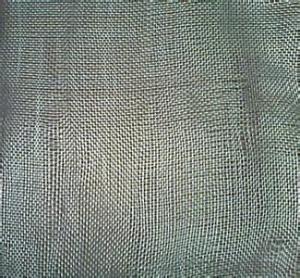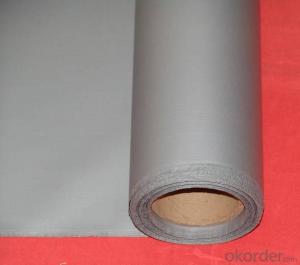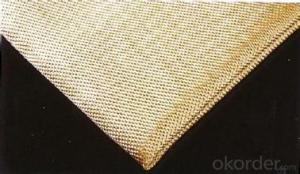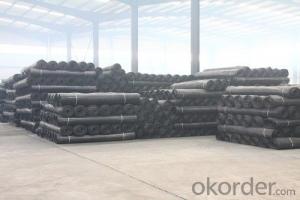High Quality China Fireproof Silica Fiber Glass Cloth
- Loading Port:
- China Main Port
- Payment Terms:
- TT OR LC
- Min Order Qty:
- -
- Supply Capability:
- -
OKorder Service Pledge
OKorder Financial Service
You Might Also Like
Product Description
Texturized glass fiber cloth is made by texturized yarn with high temperature resistance, high strength after puffing process .Texturized glass fiber cloth is a new type of fabric developed on the basis of continuous glass fiber filter cloth. Due to the yarn is fluffy and have good air permeability, which can improve the filtering efficiency, reduce the filtration resistance, higher dust removal efficiency can reach more than 99.5%.Texturized glass fiber cloth is mainly used for high temperature and high strength etc. For example: cement, carbon black, steel, metallurgy, lime kiln, thermal power and coal industries.
Product Features
1 resistant to ozone, oxygen, light and climate change
2 high strength, high modulus, low shrink, no deformation.
3 incombustible.Heat insulation ,heat preservation.
4 higher than working temperature, still keep residual strength.
5 corrosion resistance.
6 electrical insulation
- Q:How is fiberglass fabric used in the medical industry?
- Due to its unique properties and characteristics, fiberglass fabric finds wide application in the medical industry. One primary use of fiberglass fabric in this industry is for the manufacturing of cast and splint materials. When a patient suffers from a fracture or broken bone, a combination of fiberglass fabric and resin material is used to create a cast or splint that offers support and immobilization to the affected area. The fabric is soaked in a resin solution and then applied to the patient's limb, where it solidifies and forms a rigid structure. The lightweight and durable nature of fiberglass fabric make it an ideal choice for these purposes as it provides the necessary rigidity and support while still allowing for mobility and comfort. Moreover, fiberglass fabric is also employed in the production of prosthetics and orthotics. Prosthetics are artificial limbs or body parts that replace missing or non-functional body parts, while orthotics are devices used to support, align, and improve the function of different body parts. Fiberglass fabric is often used as a reinforcement material in constructing these devices as it offers high strength and stability. The fabric is layered and bonded with other materials to create a sturdy and lightweight structure that can withstand daily wear and tear. Additionally, fiberglass fabric is utilized in manufacturing medical equipment such as surgical drapes and gowns. These fabrics are designed to act as a barrier against fluids and microorganisms, preventing contamination during surgical procedures. The impermeable nature of fiberglass fabric makes it an effective choice for these applications as it bars fluid penetration and maintains a sterile environment. In conclusion, fiberglass fabric plays a vital role in the medical industry by providing support, strength, and protection in various applications. Its versatility, durability, and ability to conform to different shapes and sizes make it an invaluable material for medical professionals in their efforts to provide optimal care and treatment to patients.
- Q:What is fiberglass sound absorption board?
- Glass wool is the molten glass fibrosis, the formation of cotton like material, chemical composition of glass, is a kind of inorganic fibers. With good forming, small volume density, thermal conductivity, both thermal insulation, sound-absorbing performance, corrosion resistance, chemical stability.
- Q:The influence of bag dust removal on dust filtration
- The filter speed V (or than the load QF) is an important technical and economic index representing the capacity of the bag filter to treat gas. The selection of filtration rate should take account of economy and the requirement of filter efficiency. From the economic considerations, the filtration rate is high, with the same flow gas required filter area is small, then the size of the dust remover, the area, the steel consumption is also small, so the investment is small, but the pressure loss, power consumption, damage dust filter increases, because of high operating costs. From the aspect of dust filtration efficiency, the influence of filtration rate is remarkable. Some experiments show that the filtration rate increases by 1 times, and the dust passing rate may increase by 2 times or even more than 4 times. So the filter speed is usually expected to be lower. The filter speed of the fabric filter cloth is 0.5 ~ 2m/min, and the felt filter material is 1 ~ 5m/min. From the two aspects of economy and efficiency, this filter speed range is the most appropriate. When the filtration rate increases, it will intensify the penetration of dust particles by three ways, namely, through, extrusion and air holes, thereby reducing the dust removal efficiency.
- Q:Are fiberglass fabrics available in different colors or finishes?
- Fiberglass fabrics come in various colors and finishes, offering a wide range of options. While the natural color of fiberglass fabric is typically white or off-white, it can be transformed through dyeing or coating processes to achieve diverse colors and finishes. Dyeing involves using specialized colorants that penetrate and bond with the fibers, resulting in vibrant and eye-catching hues. These colored fiberglass fabrics find extensive use in applications where aesthetics play a vital role, such as the manufacturing of clothing, home decor items, and automotive interiors. Moreover, fiberglass fabrics can also be coated with different finishes like silicone, acrylic, or polyurethane, which not only enhance their performance but also provide specific properties like water resistance, heat resistance, or chemical resistance. The availability of a variety of colors and finishes in fiberglass fabrics opens up countless opportunities for both creative and functional applications.
- Q:What are the different weave styles available for fiberglass fabric?
- Fiberglass fabric offers a variety of weave styles, each with its own distinct qualities and uses. Among the most popular are plain weave, twill weave, satin weave, and leno weave. 1. Plain weave, the most common style, features a straightforward over-under pattern. Warp yarns pass alternatively over and under weft yarns, resulting in a balanced and stable fabric. Its versatility makes it suitable for numerous applications. 2. Twill weave showcases a diagonal line pattern on the fabric surface. By passing the weft yarn over multiple warp yarns before going under one or more, twill weave fabrics offer superior strength and durability, making them perfect for high-performance applications. 3. Satin weave is known for its smooth and glossy appearance. The weft yarn passes over several warp yarns before going under one, creating a high number of floats and a silky texture. Satin weave fabrics are lightweight, flexible, and drape beautifully, making them ideal for achieving a refined and elegant finish. 4. Leno weave is a unique style that creates an open mesh structure. Adjacent warp yarns are twisted together and secured with a weft yarn, resulting in high porosity and excellent breathability. Leno weave fabrics are commonly used in filtration and composite reinforcement applications. These are just a few examples of the weave styles available for fiberglass fabric. The choice of weave depends on specific requirements, such as strength, weight, flexibility, and aesthetics.
- Q:Is fiberglass fabric resistant to chemicals in wastewater treatment?
- Yes, fiberglass fabric is generally resistant to chemicals in wastewater treatment. It has excellent chemical resistance properties, making it suitable for use in various industrial applications, including wastewater treatment facilities.
- Q:What about laying glass fiber cloth on polyurethane waterproof coating?
- Polyurethane waterproof coating house strength is poor, mainly rely on glass fiber cloth this skeleton.
- Q:Can fiberglass fabrics be used for insulation in power generation facilities?
- Yes, fiberglass fabrics can be used for insulation in power generation facilities. Fiberglass fabrics are known for their excellent thermal insulation properties, which makes them suitable for insulating various applications, including power generation facilities. They have low thermal conductivity, meaning they can effectively prevent the transfer of heat between different areas and equipment in the facility. This is crucial in power generation facilities as it helps to maintain optimal operating temperatures and prevent energy losses. Additionally, fiberglass fabrics are also fire-resistant, which is a critical requirement in power generation facilities where the risk of fire is high. Furthermore, fiberglass fabrics are lightweight, easy to install, and have a long lifespan, making them a cost-effective solution for insulation in power generation facilities. Overall, fiberglass fabrics are a suitable choice for insulation in power generation facilities due to their excellent thermal insulation properties, fire resistance, and durability.
- Q:Is fiberglass fabric resistant to UV degradation in outdoor applications?
- Yes, fiberglass fabric is highly resistant to UV degradation in outdoor applications. Fiberglass fabric is made from fibers that are manufactured to withstand prolonged exposure to sunlight and other environmental factors. The fabric is treated with special coatings or finishes that provide additional protection against UV radiation. This UV resistance makes fiberglass fabric an ideal choice for outdoor applications where exposure to sunlight is a concern, such as in awnings, canopies, and outdoor furniture. Additionally, fiberglass fabric maintains its strength and integrity even after years of exposure to UV rays, ensuring its long-lasting performance in outdoor settings.
- Q:Can fiberglass fabric be used for car covers?
- Yes, fiberglass fabric can be used for car covers. It is a durable and lightweight material that provides excellent protection against weather elements and UV rays. Additionally, fiberglass fabric is resistant to tearing and can withstand high temperatures, making it a suitable choice for car covers.
1. Manufacturer Overview |
|
|---|---|
| Location | |
| Year Established | |
| Annual Output Value | |
| Main Markets | |
| Company Certifications | |
2. Manufacturer Certificates |
|
|---|---|
| a) Certification Name | |
| Range | |
| Reference | |
| Validity Period | |
3. Manufacturer Capability |
|
|---|---|
| a)Trade Capacity | |
| Nearest Port | |
| Export Percentage | |
| No.of Employees in Trade Department | |
| Language Spoken: | |
| b)Factory Information | |
| Factory Size: | |
| No. of Production Lines | |
| Contract Manufacturing | |
| Product Price Range | |
Send your message to us
High Quality China Fireproof Silica Fiber Glass Cloth
- Loading Port:
- China Main Port
- Payment Terms:
- TT OR LC
- Min Order Qty:
- -
- Supply Capability:
- -
OKorder Service Pledge
OKorder Financial Service
Similar products
New products
Hot products
Hot Searches
Related keywords

























